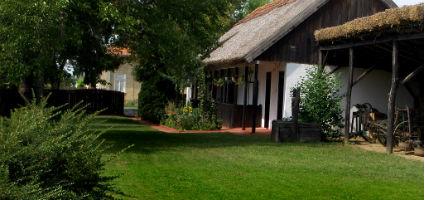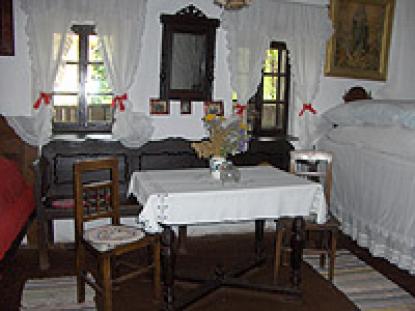2024. November 23. Saturday
Region House - Kisköre
 |
Address: 3384, Kisköre Béke út 5.
Phone number: (36) 358-149, (36) 358-311
E-mail: illesalkotas@freemail.hu
Opening hours: 01.04-30.09.: Tue-Sun 10-12, 13-17
|
Kisköre is situated by the banks of the River Tisza, on the Great Planes. In the past, people were engaged in fishing, in the 19-20th century in ploughing. The Country House presents furniture and lifestyle of a peasant family.

The walls of the house were made of loam with thatched roof. Peasants always reasoned practically so they used material they found around. To make loam, they had yellow soil while they found more than enough reed along river banks. Fence was woven from water acacia or was made of planks. Shacks, barns, pig styles and wells were built in the yard.
There were three rooms in a house. The living room looked at the street. The dining table was located in the middle of this room. In the evenings, the family sat down on a bench, stool, the chimney corner to talk. Two beds and a sofa served as sleeping places. Hey stuffed inside the beds served to make them more comfortable. The rooms were heated by the beehive oven. The 'mouth' of the oven opened from the kitchen. Corn cob, corn stalk and vine were used to make fire. The oven was used for baking bread and sweet bread. Children often played in the place between the oven and the wall where it was nice and warm.
Cloths were kept in wardrobes next to the walls. The room in the middle of the house was the kitchen. The housewife cooked on the furnace in the middle. Next to the furnace was a 'smoky place'. The family slaughtered a pig every year. Pork and beacon was smoked and stored in the attic.
The whatnot in the kitchen was used to hold kitchen equipment. 1-2 buckets of water was always stored in the house, kept on the water bench. The chamber opened from the kitchen. Crop, flour and precious equipment were all kept in the chamber.

The walls of the house were made of loam with thatched roof. Peasants always reasoned practically so they used material they found around. To make loam, they had yellow soil while they found more than enough reed along river banks. Fence was woven from water acacia or was made of planks. Shacks, barns, pig styles and wells were built in the yard.
There were three rooms in a house. The living room looked at the street. The dining table was located in the middle of this room. In the evenings, the family sat down on a bench, stool, the chimney corner to talk. Two beds and a sofa served as sleeping places. Hey stuffed inside the beds served to make them more comfortable. The rooms were heated by the beehive oven. The 'mouth' of the oven opened from the kitchen. Corn cob, corn stalk and vine were used to make fire. The oven was used for baking bread and sweet bread. Children often played in the place between the oven and the wall where it was nice and warm.
Cloths were kept in wardrobes next to the walls. The room in the middle of the house was the kitchen. The housewife cooked on the furnace in the middle. Next to the furnace was a 'smoky place'. The family slaughtered a pig every year. Pork and beacon was smoked and stored in the attic.
The whatnot in the kitchen was used to hold kitchen equipment. 1-2 buckets of water was always stored in the house, kept on the water bench. The chamber opened from the kitchen. Crop, flour and precious equipment were all kept in the chamber.
